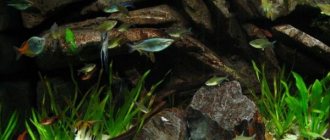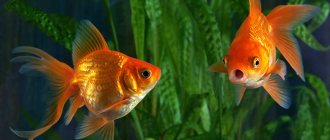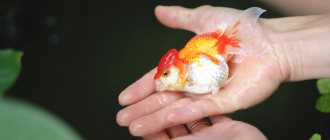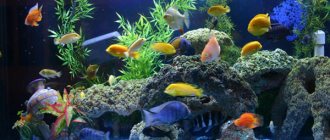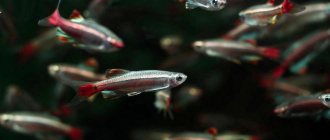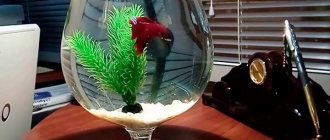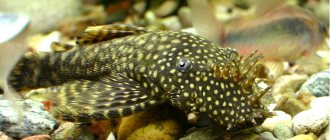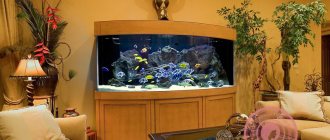Pathogens enter the aquarium from the external environment, no matter how well and regularly you take care of it. They penetrate into the aquarium water along with the food that you feed your pets; together with replacement water; together with newly planted plants; along with new fish that you add to your home aquarium.
The main source of disease, however, is fish. It is in them that there is a danger of pathogenic microbes and all kinds of parasites entering the aquarium water, which enter the body of healthy fish and provoke certain diseases, some of which carry the risk of death.
However, you shouldn’t fear the worst, because there is an excellent way to put an excellent barrier against sick fish infecting healthy individuals. This is a method better than which nothing has yet been invented; accessible to every aquarist and, moreover, low-cost. This is a quarantine for newly acquired fish, in which they must be placed before being released into your aquarium, where the fish are healthy and delight you with their appearance and interesting habits.
Only with the help of quarantine can you 100% protect the inhabitants of your aquarium from the risk of disease.
Why is a quarantine period necessary?
When acquiring a new individual, it is impossible to understand whether it is a carrier of a disease or parasites. Aquarium fish can be hidden carriers of the disease. And when changing their place of residence, due to stress in aquatic pets, the immunity usually drops, which guarantees the occurrence of an infection and its transition from a latent state to an overt one.
An infected, sick fish is a big threat to the entire aquatic world. To prevent the disease from spreading to healthy pets, before moving new fish into a jar, they are kept in quarantine.
On average, the duration of quarantine is 2-5 weeks.
Moreover, the fish is not only kept in a separate container, but also carefully monitored. And at the first manifestations of the disease, appropriate treatment is carried out. Quarantine is also used for “old” pets if they have any problems with their well-being.
Option two - Find out the origin of the fish
Ask the seller where the fish is from. There are several options here. Either he has one or a couple of aquariums, and the reproduction of fish is left to chance, and the hobbyist has to sell off the surplus fish. The fish can be of any quality, but in view of a small aquarium farm, the risks of getting an outbreak of a dangerous infection in your aquarium are not great. Or the seller is a professional fish farmer who has been doing this business for many years, offering the fruits of his labor for sale in large quantities.
Such sellers always have fish of the highest quality, and the owner of the fish farm significantly limits the supply of fish from unverified sources. The only drawback in such farms is the accumulation of certain diseases that manifest themselves as a result of stressful situations.
Features of arranging a quarantine facility
The container allocated for quarantine differs from a regular aquarium in the conditions for keeping the fish. The main differences can be summarized as follows:
- Small volume. The quarantine capacity will be calculated based on the length of the individuals. For example, for large goldfish you need a jar of 50-60 liters, and for small barbs 15-20 liters is enough.
- Due to the small volume, bottom soil is not placed in the quarantine tank. No plants are planted there either. But for comfort, you can decorate the container with artificial plants.
- Fish undergoing quarantine need shelters. Such places help pets survive stress and quickly adapt to new conditions. But place the shelters so that they do not block the view and allow constant observation of the fish.
- Mandatory equipment for a quarantine person is a filter, a heater and a thermometer. A lid for an aquarium with an installed lamp is also required.
If, after the required time, the fish also remains shy and does not show activity, the quarantine time is extended and observation is continued. If any infection occurs, treatment is carried out there, in a quarantine facility or in another bank.
To relieve quarantined fish from unnecessary stress, install the quarantine box in a quiet place.
During quarantine, the water in the container is changed several times weekly. A good filter system and aeration becomes necessary. It is not necessary to use activated carbon, as in classic jars. You can only thoroughly treat the filter sponge with an antiseptic and wash it under running warm water every 3-4 days.
Diagnostics
All organizations regularly monitored fish health. Many checked bony fish manually (41%, 15/37). The test included a biopsy of gill tissue and collection of scales. Small bony fish were usually observed in groups (5-10%), while large bony fish were observed individually. Most institutions performed routine manual diagnostics of cartilaginous fish (54%, 20/37), including scale collection, endoscopy/biopsy of gill tissue, morphometric studies, diagnostic scanning (radiography, ultrasonography), blood tests, blood cultures, fecal samples, coelom aspirate and specific tests (microchipping). The remaining institutions did not carry out routine diagnostics, but resorted to it when a disease was suspected (46%, 17/37).
All organizations performed autopsies on fish that died during quarantine, and several reported that apparently diseased fish were euthanized followed by autopsy. Specialists from one of the institutions took the 2% of the least valuable individuals and performed an autopsy. Pathohistological examination was rarely carried out: some organizations performed it on all dead individuals that were sufficiently fresh, although in case of mass mortality only a portion of individuals were analyzed (15%, 4/26); most often, pathohistology was performed on less than 10% of dead fish, usually when a diagnosis could not be made based on history, water quality, or autopsy (54%, 14/26); and one institution did not use pathology (4%, 1/26).
Diagnosis was typically performed by veterinarians (veterinarians and veterinary technicians) and students (53%), other institutional staff (10%), or both (37%, 11/30).
Types of quarantine
Based on the length of time the fish are in quarantine, a short period (1.5-2.5 weeks) and a long period (1-3 months) are determined.
Fish from natural reservoirs are subjected to long-term quarantine.
Observing them for a long time allows us to identify and get rid of all possible parasites, as well as understand whether the fish have bacterial or viral infections.
For fish raised in aquarium conditions, quarantine periods are usually not long. Quarantine is also divided into varieties and according to the conditions under which new individuals are kept there.
Prophylactic
Provides for the implementation of various treatment and preventive procedures for aquarium pets that show no signs of infection. With preventive isolation, the fish adapts to new conditions and gets rid of stress. Typically, the duration of preventive quarantine is 1.5-2 weeks.
Passive
- Necessary for identifying symptoms of diseases in fish that are suspected of infection (loss of appetite, lethargy). Under passive quarantine conditions, the fish are kept for about 3-4 weeks.
- However, she is not subjected to any treatment, including prophylactic treatment. And they are waiting for more noticeable signs of the disease to appear. If an infection is detected, the sick individual is transferred to active quarantine conditions.
When the fish is in passive quarantine, it can be subjected to light antiparasitic treatment (for example, with Omnipur or Melafix in prophylactic doses).
Active
Provides for the treatment of sick fish and their isolation from healthy relatives. Fish are subjected to medical procedures (their list depends on the identified disease):
- antibiotics;
- antiparasitic treatments.
The duration of active quarantine depends on the severity of the disease. After completion of treatment, the quarantine worker, all equipment and accessories are disinfected.
It is better to make the capacity of the active quarantine tank a multiple of 10. This will facilitate the task of calculating the medicinal dose during treatment.
Cleaning and disinfection
After baths, most organizations used activated carbon for drug adsorption (58%, 19/33). Of these nineteen, 84% dumped waste coal into city sewers, 5% burned it, and 11% used the services of professional contractors.
Half of the facilities performed UV disinfection in some quarantine systems (52%, 14/27). A number of institutions installed ozonizers on a small number of quarantine systems, or ozonated the system after use (22%, 6/27). Many facilities did not use UV sterilizers and ozonizers (44%, 12/27).
Equipment after quarantine was, in most cases, treated with bleach or another chlorine-containing disinfectant after the container was drained (74%, 25/34). Other products including peroxides, iodophors, quaternary ammonium compounds, biguanides, alcohols, polymer compounds and fresh water have also been used to treat marine system equipment.
Cleaning and disinfection varied among organizations. If no disease was diagnosed during quarantine, most did not restart the system. Many institutions have kept the system fish-free for some time, although this was often due to serial supply. Some facilities drained the system or used bleach and other chlorine products. If a disease was detected during quarantine, various disinfectants were used, as well as changes in temperature and salinity, taking into account the infection that arose.
Therapeutic baths during quarantine
If a quarantined fish behaves actively and does not show unhealthy symptoms, then it does not need prevention.
Healthy fish are sent to a common jar immediately after the end of quarantine.
When treating sick individuals, specialized medications are used. But for beginner aquarists, the use of medications is not recommended. Instead, it is better to give your pets medicinal baths.
Salt
Water with a high concentration of salt is an effective way to combat saprolegniosis (fungal infection) or ectoparasitic infestations:
- trichodinosis;
- Costiosis;
- oodiniumosis;
- dactylogyrosis;
- chylodonellosis;
- tetrachymenosis;
- apiosomiasis;
- hydrodactylosis;
- trichodinosis.
It is easy to understand that a fish is suffering from a parasitic infestation. The sick individual begins to intensively rub against gravel and decoration elements, and its body becomes covered with whitish mucus. Sick fish avoid unnecessary movements and stay in the corners of the container or near the aerator. Saprolegniosis is manifested by the appearance of pubescent growths in the lips and fins.
To carry out salt baths, the aquarist will need 3 containers. Water can be taken from a general aquarium or regular tap water, having subjected it to preliminary preparation:
- warm up to +80⁰С;
- cool to the temperature of the aquatic environment in a common container;
- Aerate for 30-40 minutes.
A saline solution of 2% concentration (20 g of salt per 1 liter of water) is poured into the first bowl. The second container is filled with a weaker solution: 5 g of salt per 1 liter of water), and in the third jar a little manganese is dissolved until the water turns a pale pink hue.
The sick individual is placed alternately in containers 1 and 2 and kept for 10-12 minutes in each. After the end of the salt baths, the individual in the net is transferred to a container with potassium permanganate and quickly rinsed and returned to the quarantine area.
To completely cure an infection, 2-3 measures are usually required with an interval of 2-3 days.
If the fish behaves sluggishly in the saline solution, turns over with its belly up, or swims sideways, the procedure is stopped. This behavior indicates an incorrect dosage of salt. When the concentration is correct, the fish behaves calmly.
Formalin
Formalin is a powerful antiparasitic substance with a wide range of effects. To prepare a medicinal solution, 1 ml of formalin is dissolved in 5-6 liters of water. The sick individual is placed in the bath for 10-13 minutes. But, if the fish begins to demonstrate unusual behavior, the procedure is immediately stopped, and the fish is transferred to clean water.
Ammonia
Baths containing ammonia are effective in treating various ecoparasitic infections. For ammonia baths, 2 containers are required - one with an ammonia solution, the other containing methylene blue.
To prepare an ammonia solution, take 8 liters of water and dissolve ammonia in it in a volume of 6.3 ml. Instead of ammonia, you can use concentrated ammonia (25-27%). In this case, take 2.5 ml of concentrate per 8 liters of water.
Ammonia is a toxic drug, so when carrying out treatment, take a very responsible approach to the preparation of the solution and the time of the procedure.
The temperature in the ammonia bath is set within +18-25⁰С. The fish is placed in the solution for 20-25 seconds. Then it is transferred to a second container with methylene blue. The procedure is considered successful if the fish in the container with the dye begins to actively swim after 1-1.5 minutes.
Third option - Proper transportation
After buying a fish, almost the most important manipulation with the purchase follows - transportation home. And now it’s time to note that properly packaged fish will easily survive a three- or even four-day journey to a new habitat. Conversely, improperly packaged fish will not survive a two-hour journey in the back seat of a comfortable imported car. What is the reason?
And the reason here lies in the competence of both the seller and the buyer. Any transportation for fish will be stressful. Just a few simple manipulations and you can reduce the negative effects of stress to a minimum:
- Never place fish from different sellers in the same shipping package;
- The purchased fish must be hungry and with an empty intestine. If for small fish a couple of days of hunger strike is enough, then for large and predatory species you need to live up to 5 days without food. In this case, the belly of the fish should be crisp and not blackened. Either yourself or ask the seller to throw a couple of activated carbon tablets into the shipping bag;
- On the road, fish need oxygen, so the water in the bag should be an order of magnitude less than air;
- Large or spiny fish are best transported in double bags. For highly spiny aquarium inhabitants, thick cardboard or thin flexible plastic can be placed between the bags.
Lately, all sorts of anti-stress drugs have been gaining popularity, but I cannot evaluate their effectiveness, because I have never used them. All my transportation of purchased fish ended successfully, thank God, therefore, I do not plan to use these drugs in the future. Packed bags are best placed in thermal bags at any time of the year.


